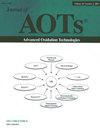Fe3O4 Magnetic Nanoparticles: Characterization and Performance Exemplified by the Degradation of Methylene Blue in the Presence of Persulfate
Q Chemistry
引用次数: 36
Abstract
Abstract In this study, the oxidation of methylene blue (MB) over iron oxide magnetic nanoparticles (Fe3O4), which effectively activates persulfate anions (S2O82−) to form sulfate free radicals (SO4−•), was explored. In addition, the effect of the initial pH, sodium persulfate (Na2S2O8, PS) concentration, and Fe3O4 content on the decolorization of MB was investigated. The results revealed that the decolorization rate increased when the persulfate concentration increased from 0.03 to 0.12 g/L and the Fe3O4 content from 0.1 to 0.8 g/L. Therefore, the Fe3O4 nanoparticles enhanced the decolorization of MB. The catalyst was analyzed using cyclic voltammetry (CV), three-dimensional excitation-emission fluorescence matrix (EEFM) spectroscopy, and zeta potential measurements. The CV spectra indicated that a reversible redox reaction may explain the high catalytic activity of the catalyst. EEFM was used to evaluate the yield of a fresh Fe3O4 catalyst, and two peaks were observed at EX/EM wavelengths of 230/300 nm and 270/300 nm. Furthermore, the structure and surface morphology of the catalyst were characterized using X-ray diffraction (XRD) and environmental scanning electron microscopy (ESEM)-energy dispersive spectroscopy (EDS), respectively. The XRD result confirmed the existence of Fe3O4 in the catalyst. ESEM was used to determine the Fe3O4 particle size, indicating a high degree of nanoparticle dispersion.Fe3O4磁性纳米颗粒:表征及其在过硫酸盐存在下降解亚甲基蓝的性能
摘要本研究探讨了亚甲基蓝(MB)在氧化铁磁性纳米颗粒(Fe3O4)上的氧化作用,该氧化作用可有效激活过硫酸盐阴离子(S2O82−)形成硫酸盐自由基(SO4−•)。此外,还考察了初始pH、过硫酸钠(Na2S2O8、PS)浓度和Fe3O4含量对MB脱色效果的影响。结果表明:过硫酸盐浓度从0.03 g/L增加到0.12 g/L, Fe3O4含量从0.1 g/L增加到0.8 g/L,脱色率提高;因此,Fe3O4纳米颗粒增强了MB的脱色效果。采用循环伏安法(CV)、三维激发发射荧光矩阵(EEFM)光谱和zeta电位测量对催化剂进行了分析。CV谱分析表明,该催化剂具有较高的催化活性。用EEFM评价了新型Fe3O4催化剂的产率,在230/300 nm和270/300 nm的EX/EM波长处观察到两个峰。利用x射线衍射仪(XRD)和环境扫描电镜(ESEM)-能谱仪(EDS)对催化剂的结构和表面形貌进行了表征。XRD结果证实了催化剂中Fe3O4的存在。用ESEM测定了Fe3O4的粒径,表明纳米颗粒分散程度高。
本文章由计算机程序翻译,如有差异,请以英文原文为准。
求助全文
约1分钟内获得全文
求助全文
来源期刊
CiteScore
0.88
自引率
0.00%
发文量
0
审稿时长
1 months
期刊介绍:
The Journal of advanced oxidation technologies (AOTs) has been providing an international forum that accepts papers describing basic research and practical applications of these technologies. The Journal has been publishing articles in the form of critical reviews and research papers focused on the science and engineering of AOTs for water, air and soil treatment. Due to the enormous progress in the applications of various chemical and bio-oxidation and reduction processes, the scope of the Journal is now expanded to include submission in these areas so that high quality submission from industry would also be considered for publication. Specifically, the Journal is soliciting submission in the following areas (alphabetical order): -Advanced Oxidation Nanotechnologies -Bio-Oxidation and Reduction Processes -Catalytic Oxidation -Chemical Oxidation and Reduction Processes -Electrochemical Oxidation -Electrohydraulic Discharge, Cavitation & Sonolysis -Electron Beam & Gamma Irradiation -New Photocatalytic Materials and processes -Non-Thermal Plasma -Ozone-based AOTs -Photochemical Degradation Processes -Sub- and Supercritical Water Oxidation -TiO2 Photocatalytic Redox Processes -UV- and Solar Light-based AOTs -Water-Energy (and Food) Nexus of AOTs

 求助内容:
求助内容: 应助结果提醒方式:
应助结果提醒方式:


